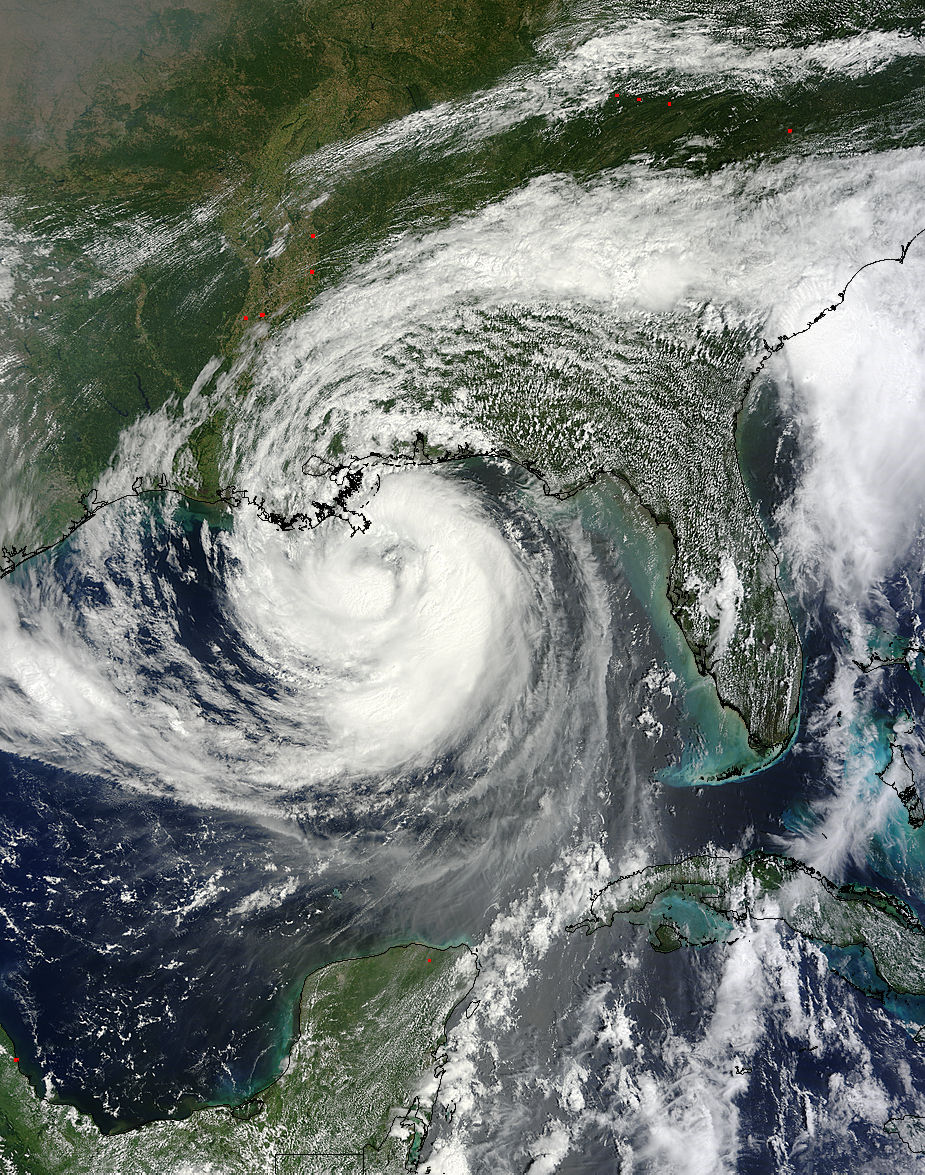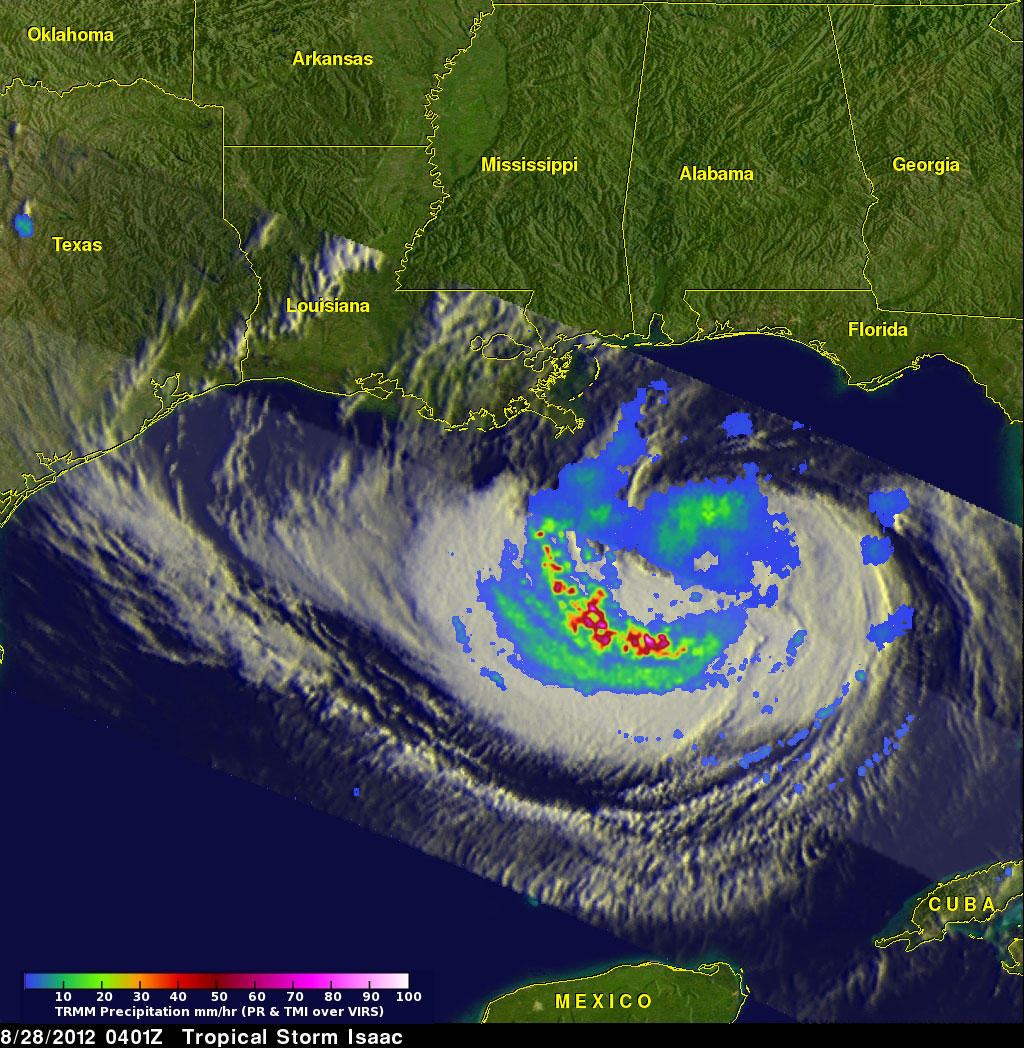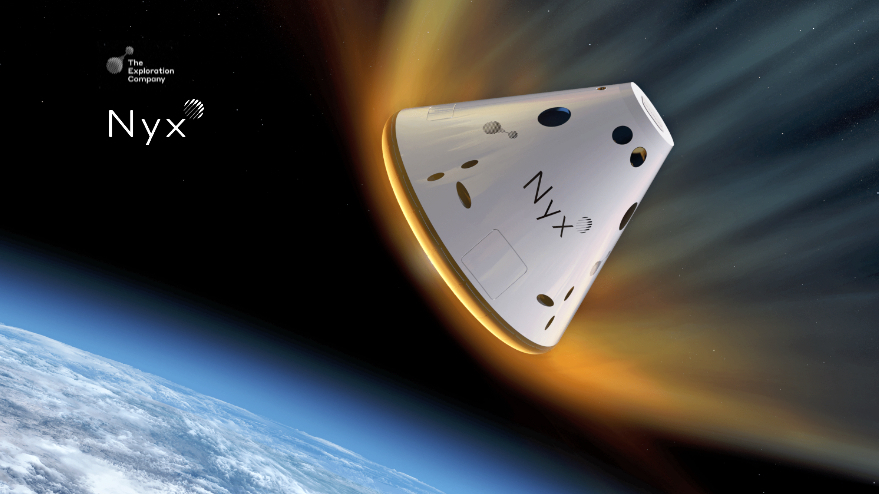
Several different satellites are keeping a keen eye on Hurricane Isaac, which has made landfall along the Louisiana coast nearly seven years to the day after Hurricane Katrina began laying waste to New Orleans.
Imagery from NASA's TRMM and Terra satellites and the GOES-13 spacecraft, operated by the National Oceanic and Atmospheric Administration, showed Hurricane Isaac's outer bands lashing the Gulf Coast earlier today (Aug. 28) before the huge storm came ashore.
Isaac was upgraded from a tropical storm to a Category 1 hurricane today and currently has maximum sustained winds of 80 mph (130 kph). It is predicted to dump perhaps 20 inches (51 centimeters) of rain on some spots over the next few days.
The satellite shots show just how enormous Isaac is. As of Tuesday morning, tropical storm-force winds extended 205 miles (330 kilometers) out from Isaac's center, making the maelstrom 410 miles (660 km) wide, NASA officials said.
The Earth-observing spacecraft have been tracking Isaac's progress for a while, watching as it churned across the eastern Caribbean and tacked north toward Florida and the Gulf of Mexico.
The slow-moving maelstrom's trek toward the Gulf Coast is captured in GOES-13 footage from the last three days, which has been compiled into a minute-long video. Viewers can watch as Isaac's center passes 40 miles (64 km) south of Key West, Fla., on the afternoon of Aug. 26, before the storm turns toward the Mississippi Delta.

While experts are predicting heavy rainfall and flooding in Isaac's wake, the damage should not come close to what Hurricane Katrina wrought seven years ago. That storm registered as a Category 3 hurricane when it came ashore on Aug. 29, 2005, with sustained winds topping out around 127 mph (204 kph).
Breaking space news, the latest updates on rocket launches, skywatching events and more!
Some experts estimate Katrina caused $125 billion in damage, making it the costliest natural disaster in United States history. The storm killed more than 1,800 people, most of them in Louisiana. Many of these people died after New Orleans' levee system failed and huge swathes of the city were flooded.
Follow SPACE.com senior writer Mike Wall on Twitter @michaeldwall or SPACE.com @Spacedotcom. We're also on Facebook and Google+.
Join our Space Forums to keep talking space on the latest missions, night sky and more! And if you have a news tip, correction or comment, let us know at: community@space.com.

Michael Wall is a Senior Space Writer with Space.com and joined the team in 2010. He primarily covers exoplanets, spaceflight and military space, but has been known to dabble in the space art beat. His book about the search for alien life, "Out There," was published on Nov. 13, 2018. Before becoming a science writer, Michael worked as a herpetologist and wildlife biologist. He has a Ph.D. in evolutionary biology from the University of Sydney, Australia, a bachelor's degree from the University of Arizona, and a graduate certificate in science writing from the University of California, Santa Cruz. To find out what his latest project is, you can follow Michael on Twitter.
